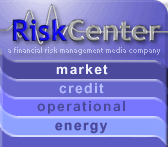Location: New Jersey
Author: Anthony McSwieney
Date: Thursday, August 21, 2008
After a tumultuous first quarter of scheduled and surprise cuts in the overnight federal funds target rate, the Federal Reserve Board voted 9-1 in second quarter 2008 to keep the target rate at a low 2.00%. The lone dissenter was Richard Fisher, president of the Federal Reserve Bank of Dallas, calling for a rise in interest rates to fight inflation. The Fed kept its target for the fed funds rate at 2.00% at its recent August 5 meeting, with Fisher again the lone dissenter.
The Fed has recently been the target of questions from Congress regarding its aggressive rate cuts. Entering third quarter 2008, the Fed faced an economy teetering on a recession, rising inflation and a fluctuating U.S. dollar, with the overall trend still downward against foreign currencies. While the U.S. Department of Treasury and the Fed have been moving in conjunction to curb the credit crisis by lowering interest rates and increasing the money supply, these policies have jointly exacerbated inflation and increased the pressure on the value of the dollar.
It is expected that the currently high level of inflation will continue until monetary policy changes toward a tightening or inflationary view. If sustained it "might lead the public to revise up its expectations for longer-term inflation" and as a result "we could see an unwelcome rise in actual inflation over the longer term," according to Federal Reserve Board Chairman Ben Bernanke.
Given these challenges, the Fed has no choice but to raise rates. However, as evident by the Fedís decision on August 5 to keep the fed funds rate flat, the Fed feels it is imperative, at the present time, to continue to keep rates low in order to stimulate economic growth and alleviate credit concerns.
When the Fed implements an inflationary rate policy, bank net interest margins are squeezed due to the timing of bank liabilities repricing more quickly than its assets. Depending on competitive factors and extent of rate changes, this squeeze in margins will have a significant affect on bank earnings, particularly if earnings continue to be undermined by a prolonged credit crisis. Despite these pressures, A.M. Best projects banksí net interest margins to increase, benefiting from the rate cuts since September 2007, through third quarter 2008.

To subscribe or visit go to: http://www.riskcenter.com